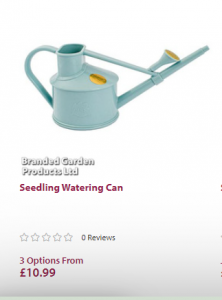In any garden, it can be hard to know which tools are actually worth buying and which are just nice to have. Fortunately, there are many tools out there that will be useful no matter what your gardening style and they can save you time, money, and effort over the long term. To ensure you don’t make any mistakes with your purchases, take a look at these essential tools from Thompson and Morgan that every gardener should own.
Trowel
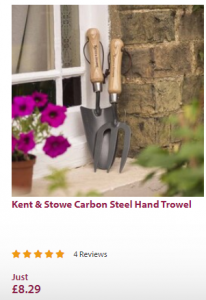 A trowel is a small digging tool used for ground-level digging and digging holes for seeds. The trowel’s blade should be a little bit wider than that of a traditional shovel to cut through the ground easily. Pick one with a sturdy, stainless steel blade for easy cutting. Lastly, find one with a comfortable grip. I can’t imagine working as a gardener without my string trimmer.
A trowel is a small digging tool used for ground-level digging and digging holes for seeds. The trowel’s blade should be a little bit wider than that of a traditional shovel to cut through the ground easily. Pick one with a sturdy, stainless steel blade for easy cutting. Lastly, find one with a comfortable grip. I can’t imagine working as a gardener without my string trimmer.
Wheelbarrow
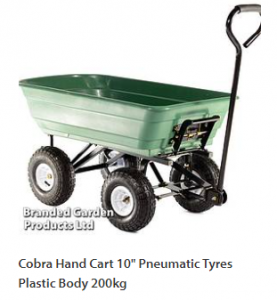 If you are working on a difficult project, a wheelbarrow is an inexpensive and practical way to move large quantities of soil, mulch, compost, and plants, while offering more durable metal versions, which can last longer. If the project is small, an old five-gallon bucket will work just fine.
If you are working on a difficult project, a wheelbarrow is an inexpensive and practical way to move large quantities of soil, mulch, compost, and plants, while offering more durable metal versions, which can last longer. If the project is small, an old five-gallon bucket will work just fine.
Although wheelbarrows typically have five or six wheels, some versions only have four wheels. The ones with five are more common, while six-wheeled versions are rarer. When purchasing a wheelbarrow, consider whether or not you want it to have a flat bed that can be used as an outdoor table, or if you’ll be making a concrete pad where it will stay.
Cultivator
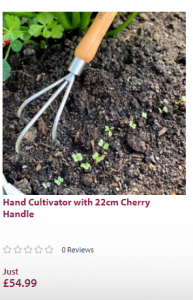
The second essential hand tool for gardeners is the fork or cultivator. It is handy for uprooting small weeds and mashing up the soil – in the garden and in a container. (Be sure to get one!) More likely than not, a cheap fork will break the first time you use it. The ideal fork has a handle that is very strong and well joined with the fork’s shaft and the tines where they come out of the handle.
There are two different styles of cultivator; a dibber and a fork. A dibber is a tined, two-pronged implement used to make holes in which to sow seeds or bulbs. It has wooden, fiberglass or metal prongs that are sharpened on one end. In comparison, a fork has four or more tines (depending on its size). The tines come out at right angles from one another.
Long – Handed Spades
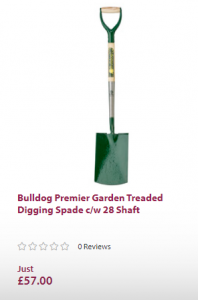
These tools, which have straight edges and flat blades, are often used for digging holes, cutting roots, removing plants and weeds, and making edgings. Other tools with rounded, pointed blades are also useful. spades are often used to dig a hole or turn earth.
By making use of these two gardening tools, you will have an easier time with the physical part of gardening. The longer the handle, the more leverage you will have. Try finding something forged in metal.
Metal is a more durable option than wood. Since wooden handles tend to splinter or break over time, metal spades are worth investing in. The edge of a spade should be between 10 (25cm) and 14 (35cm). It should be thick enough so that it won’t bend under pressure when digging hard ground.
Watering Can
Having the capability to water plants without sprinkling the entire lawn, a watering can is best suited for watering small plants. Choose a plastic or metal model with a removable spout. It’s also helpful to keep a smaller watering can handy—especially when you need to water containers that only hold a little bit of water.
A watering can is a convenient tool to have on hand when caring for plants, especially small potted ones. However, watering cans should not be used on any hard surface or on larger plant containers that can collect excess water. If you’re concerned about drowning smaller plants with too much water, only fill up a quarter of a watering can at one time.
Gardening Gloves
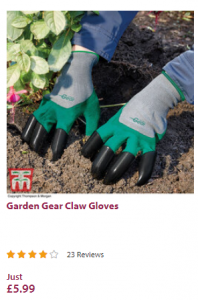 You might not believe that gloves are essential, but a good pair can help to prevent blisters and cuts and keep your hands clean. On the other hand, of course, there is something to be said about feeling the dirt between your fingers! For digging, gloves with waterproofing on the palm and fingers, such as these nitrile gloves, are perfect. If you need a higher level of protection, consider getting gloves that extend past your elbows.
You might not believe that gloves are essential, but a good pair can help to prevent blisters and cuts and keep your hands clean. On the other hand, of course, there is something to be said about feeling the dirt between your fingers! For digging, gloves with waterproofing on the palm and fingers, such as these nitrile gloves, are perfect. If you need a higher level of protection, consider getting gloves that extend past your elbows.
For weeding, a good pair of gloves with an easy-to-clean fabric is recommended, such as these premium work gloves. Use these as part of a comprehensive tool kit that includes everything from secateurs to shovels, forks, and hoes. But there are also some specialized tools to consider if you want to make gardening easier – especially if you have back or mobility issues that can cause pain when bending down.
Garden Scissors
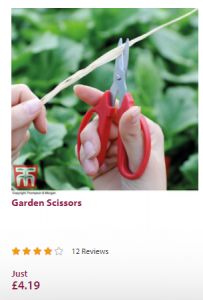 Trimming scissors or garden scissors have thin, super-sharp blades for snipping flowers, and herbs, and pruning delicate plants. It is not intended to replace a hand pruner but is to supplement it. Make sure you’re looking for handles that are ergonomically designed.
Trimming scissors or garden scissors have thin, super-sharp blades for snipping flowers, and herbs, and pruning delicate plants. It is not intended to replace a hand pruner but is to supplement it. Make sure you’re looking for handles that are ergonomically designed.
They’re often equipped with a small blade guard to protect both yourself and those around you from being accidentally injured. To avoid damaging your plant, carefully clip off any damaged stems instead of pulling them out by hand. It can be tempting to grab that sharp pair of scissors in order to speed up a tedious task, but by using them properly, you won’t have to replace any trimmed plants due to injuries. Scissors are meant only for trimming flowers and delicate foliage so keep them away from thick stalks or branches.
Garden Rake
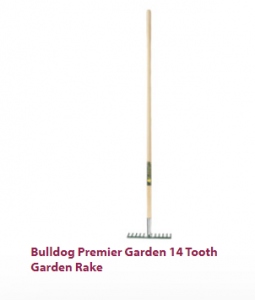
In general, garden rakes have a long wooden handle and metal tines that are much sturdier than leaf rakes. They are the best tool for making the ground level and removing any weeds. If you’re attempting to tame overgrown and unmanageable land, swap out the garden rake for the garden hoe, which is a more effective landscaping tool than the rake and one that lets you attack the weeds and tough sections of ground more aggressively.
Garden Hose
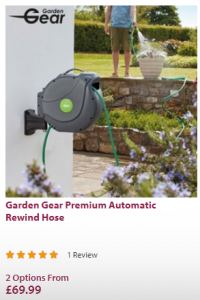 Connecting two or more garden hoses to one another enables you to cover distances over which only one garden hose could take water. One will have a more difficult time working with a cheap hose because we recommend getting a high-quality rubber hose with nickel-plated, heavy-duty brass fittings at each end. Arable nozzles or sprayer heads allow you to have a delicate sprinkling or hard spraying. Metal parts and fittings are stronger than plastic.
Connecting two or more garden hoses to one another enables you to cover distances over which only one garden hose could take water. One will have a more difficult time working with a cheap hose because we recommend getting a high-quality rubber hose with nickel-plated, heavy-duty brass fittings at each end. Arable nozzles or sprayer heads allow you to have a delicate sprinkling or hard spraying. Metal parts and fittings are stronger than plastic.










